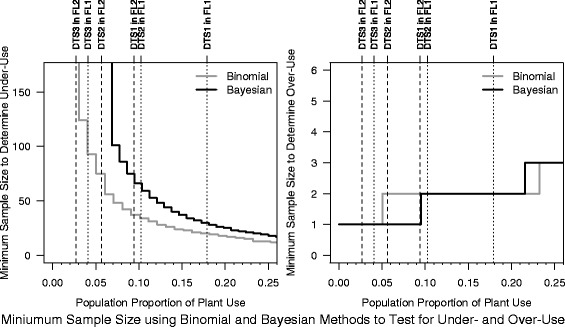Fig. 5.

Results of a power analysis that compares the minimum sample size of taxa within a family that would be required to reject the null hypothesis in favor of concluding significant under- or over-use using the binomial and Bayesian methods. The vertical dashed lines depict the average proportion for DTS1, DTS2, DTS3 for floras FL1 and FL2. The step function is the minimum sample size required to statistically define when a plant family is under- or over-used. The location where the vertical line intercepts with the step function identifies the minimum within-family number of taxa required to statistically confirm under- and over-use for that dataset and flora. The left panel shows there is no power using the binomial or the Bayesian method to detect over-use in DTS3 and FL1 (i.e., we can never conclude that families in these datasets are statistically under-used). On the other hand, the right panel shows that very few within family taxa are required to have the power to statistically conclude over-use (all datasets, all flora discussed here require two or less taxa per family), and the Bayesian method is particularly sensitive in the region of datasets DTS1, DTS2 in FL2
